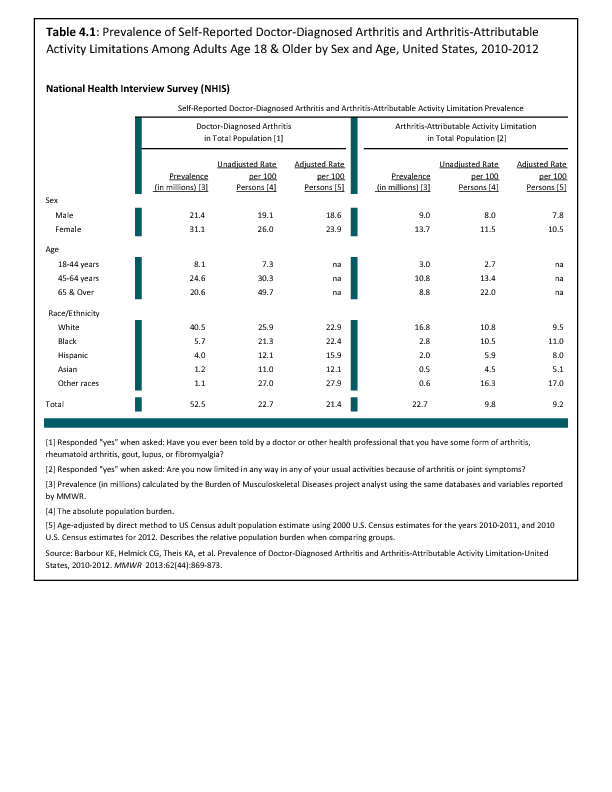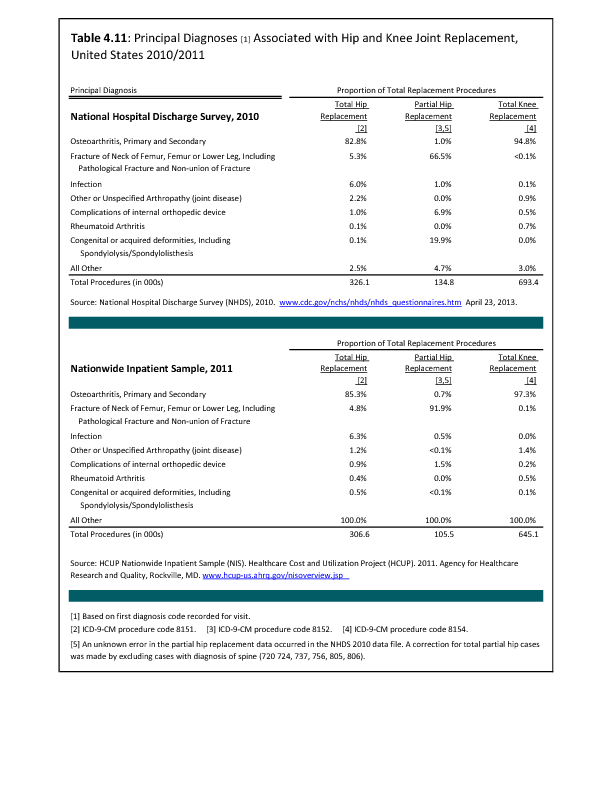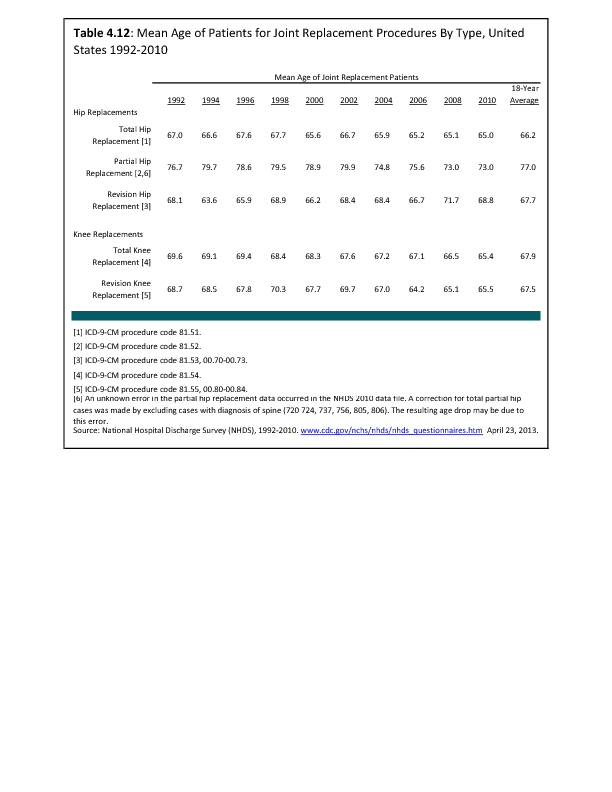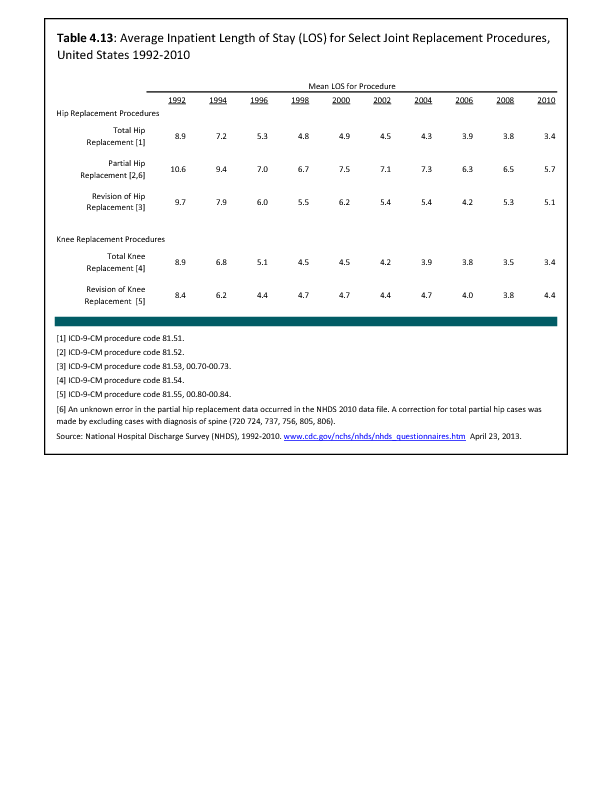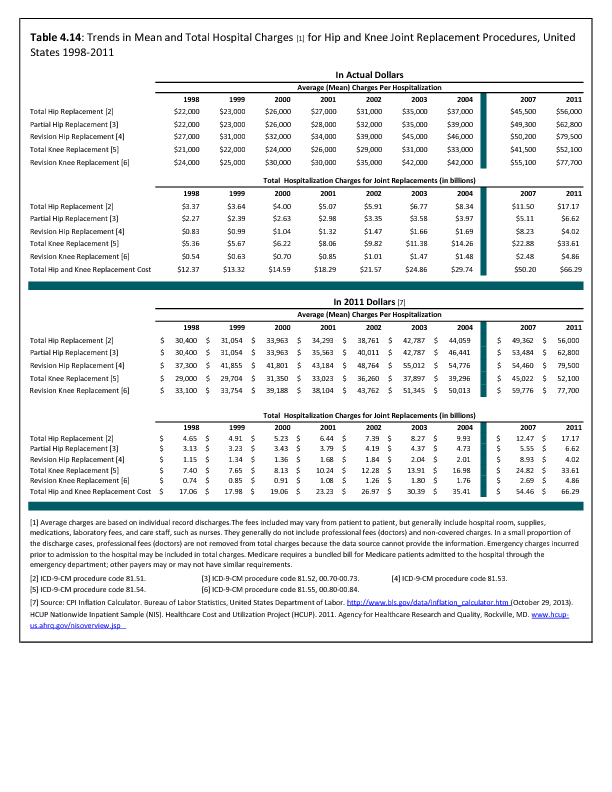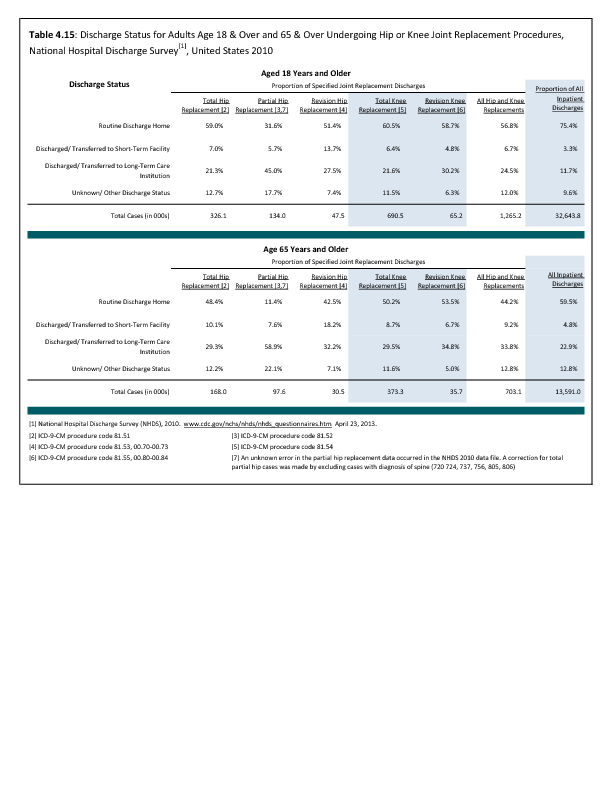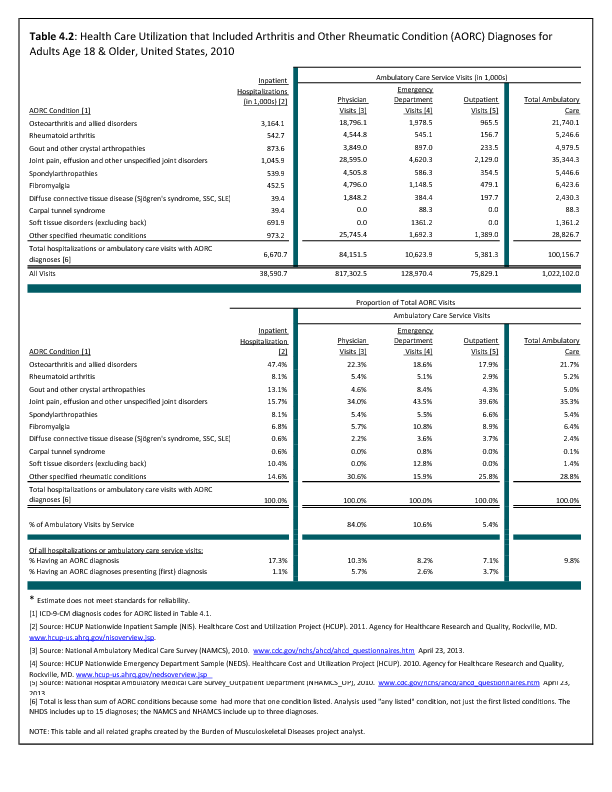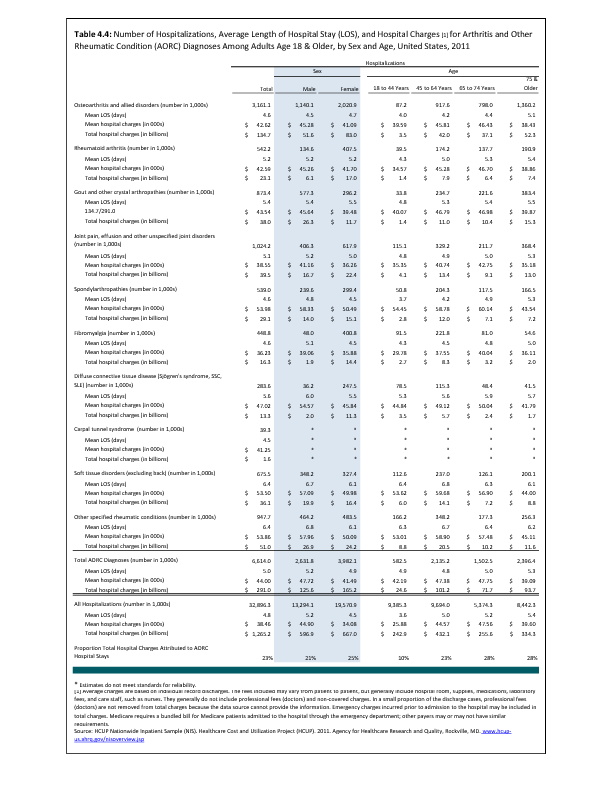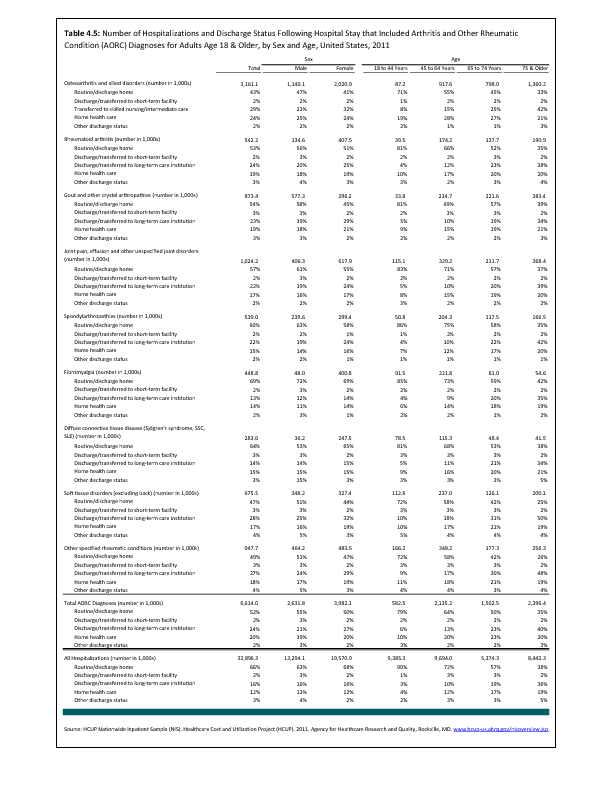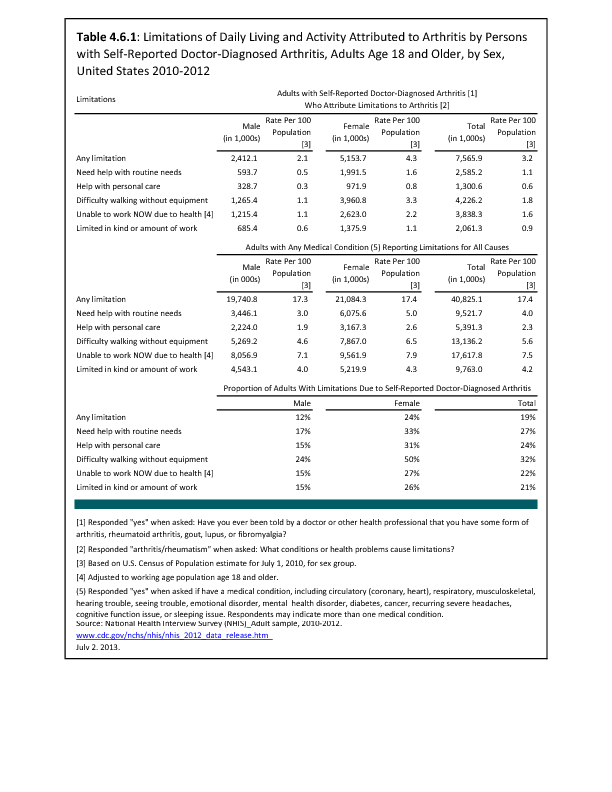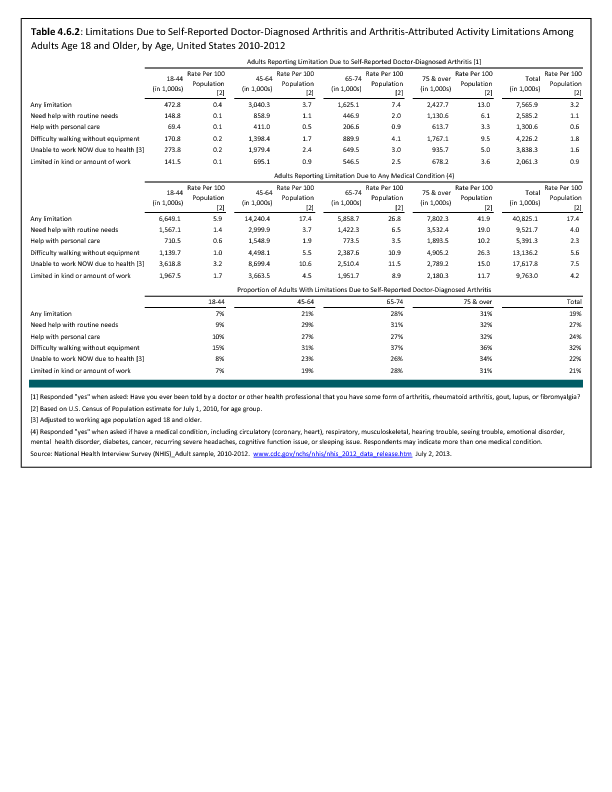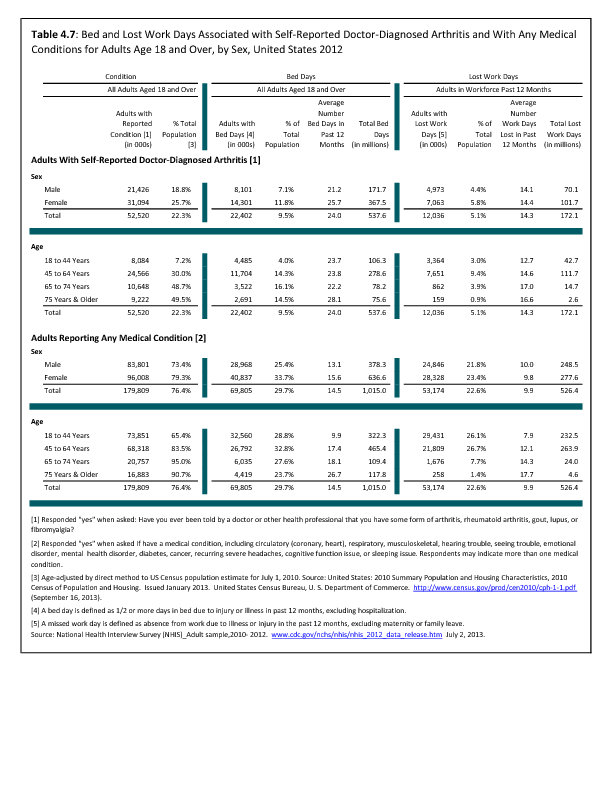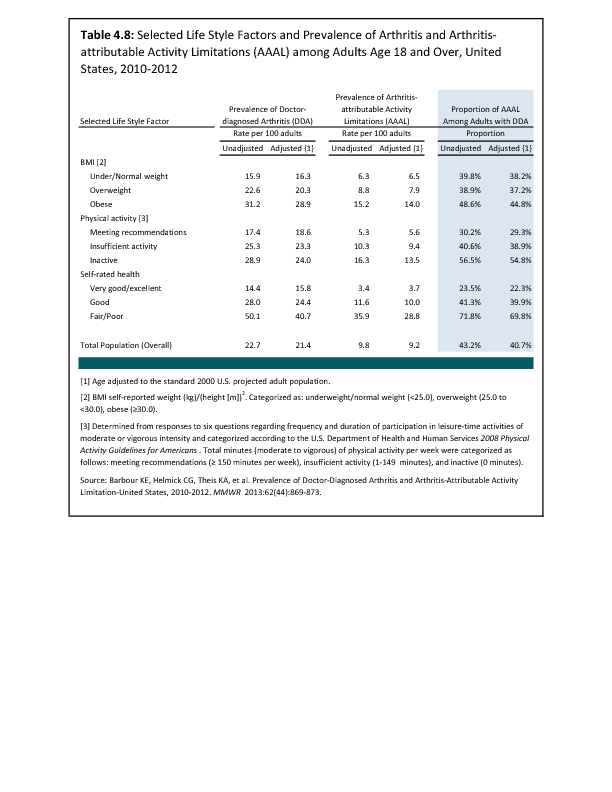In 2010 and 2011, an estimated 706,000 to 757,000 knee replacement procedure were performed on patients in the United States, comprising 56% of all joint replacement procedures. Three in five knee replacements occurred in females. Total knee replacements far exceeded revision knee replacements, which occur when the original replacement fails or becomes infected. (Reference Table 4.9 PDF CSV)
Estimated trends in knee replacement procedures from 1992 to 2010 or 2011 show steady increases in both total and revision knee replacements. Over the 18 years, knee replacement procedures approximately tripled, with the ratio of revisions to total remaining constant at 8% to 10%. (Reference Table 4.10 PDF CSV).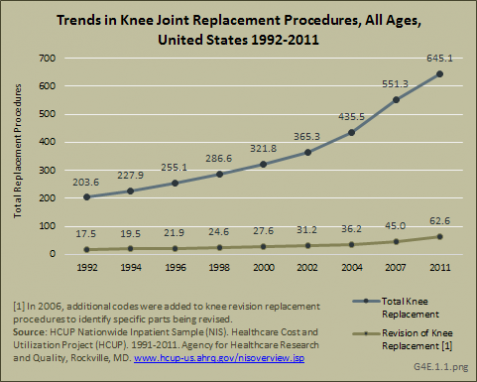
The principal diagnosis associated with total knee replacement is osteoarthritis, accounting for 95% or more of all replacements. (Reference Table 4.11 PDF CSV).
The mean age for both total knee and revision knee replacements was 68 years over an 18-year period. The mean age for both procedures shows a slow decline over this time period. (Reference Table 4.12 PDF CSV)
The mean length of stay for both total and revision knee replacements has shown a remarkable decline of about 50% from a mean of nearly 9 days in 1992 to a mean of 3.5 days in 2010. (Reference Table 4.13 PDF CSV).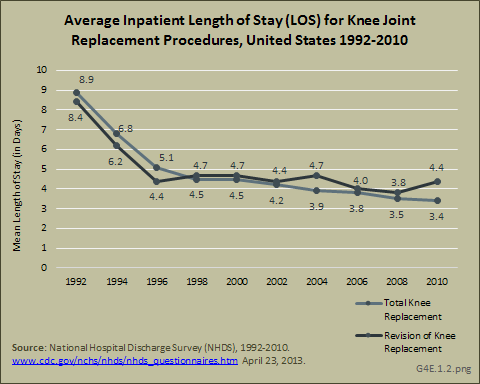
In spite of shorter hospital stays, the mean hospital charges from 1998 through 2011 showed steady increases for both knee replacements, with revision knee replacement being more expensive than total knee replacement. Total hospitalization charges for both knee replacements have more than quadrupled (in constant 2011 dollars) from $8.1 billion in 1998 to $38.5 billion in 2011. (Reference Table 4.14 PDF CSV)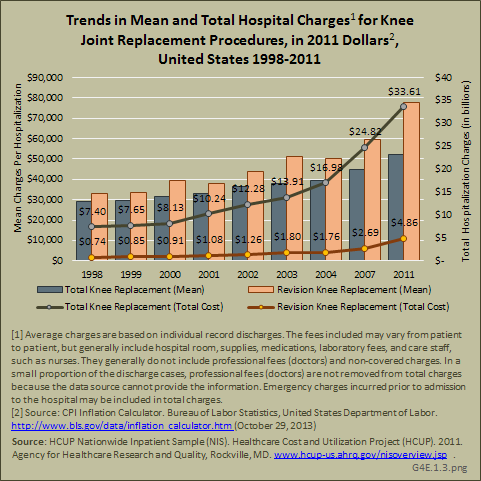
Most adults with knee replacements are routinely discharged home, with 20% to 30% discharged to long-term care. Among persons age 65 years and older, a slightly higher proportion are discharged to long-term care. (Reference Table 4.15 PDF CSV).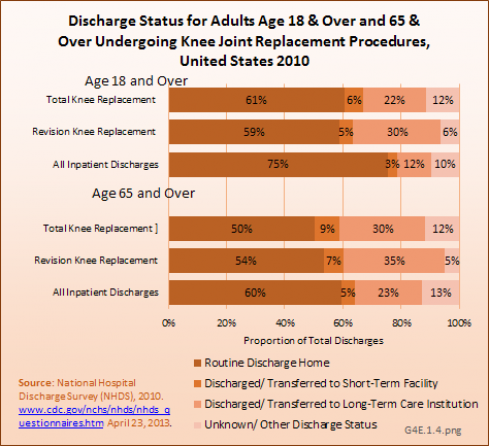
Edition:
- 2014

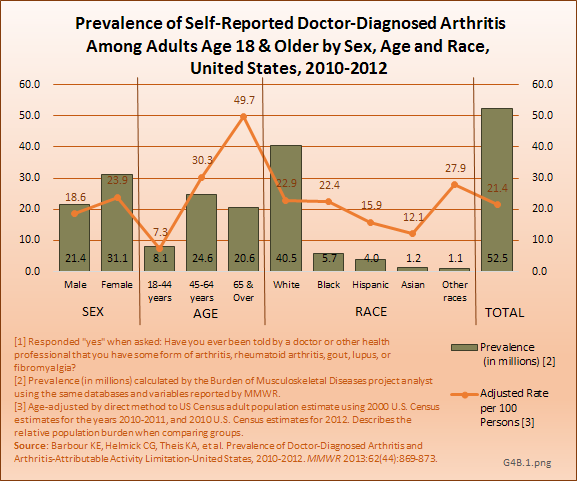
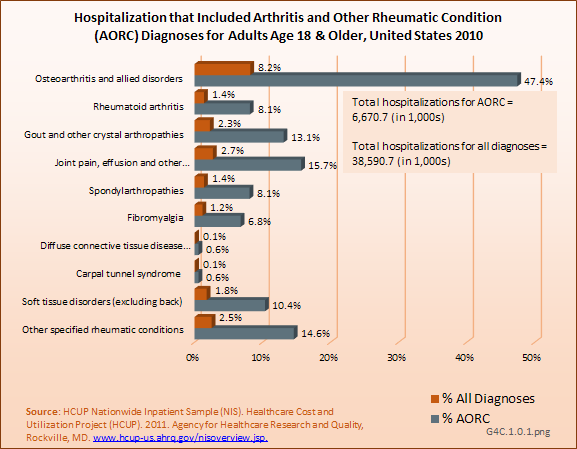
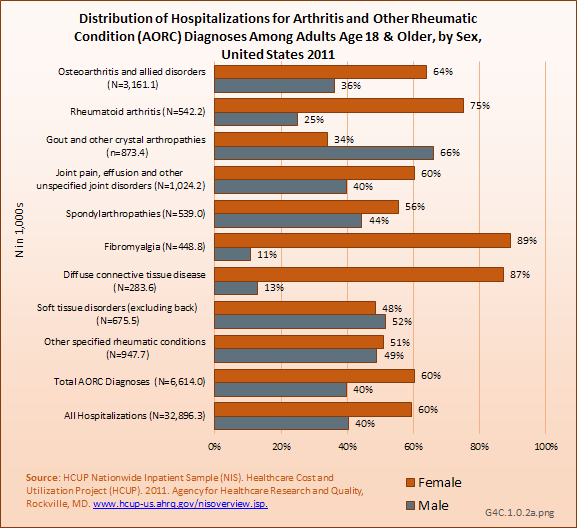
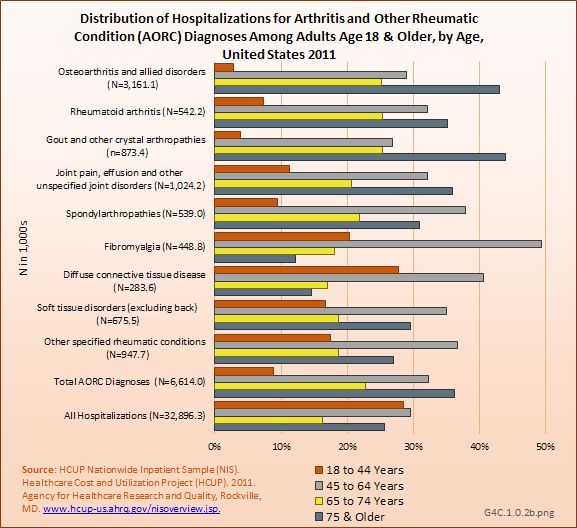
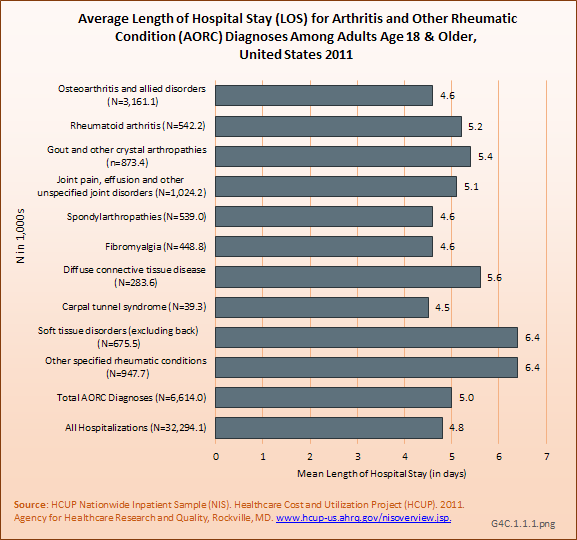
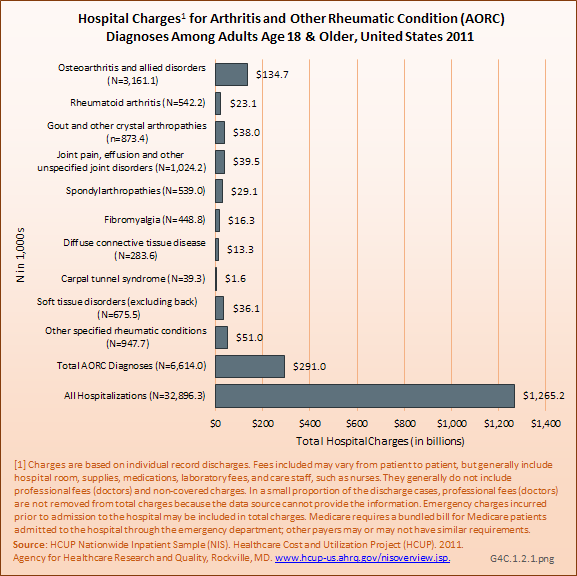
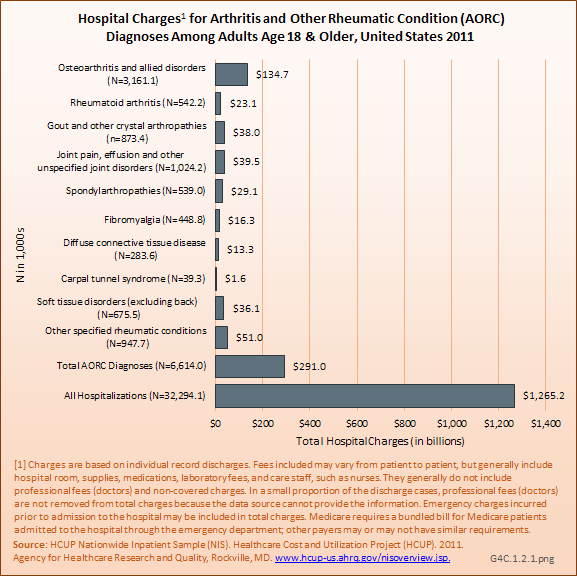
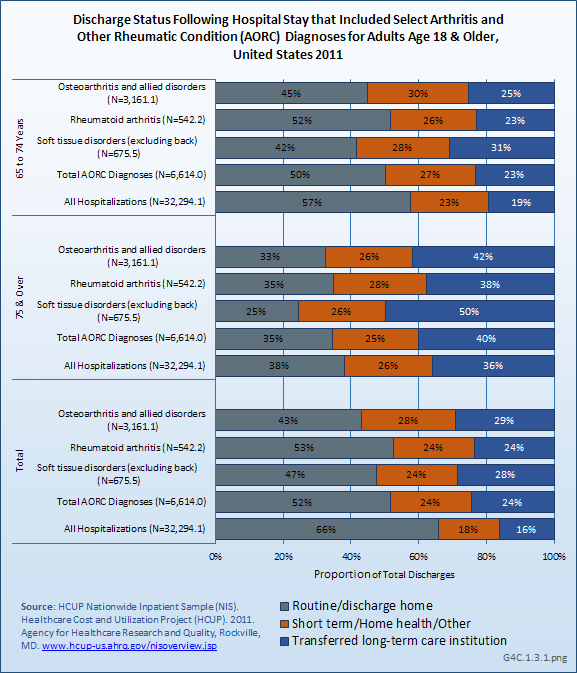
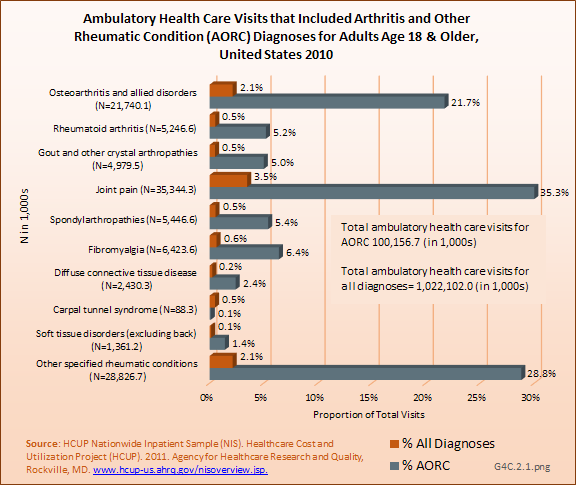
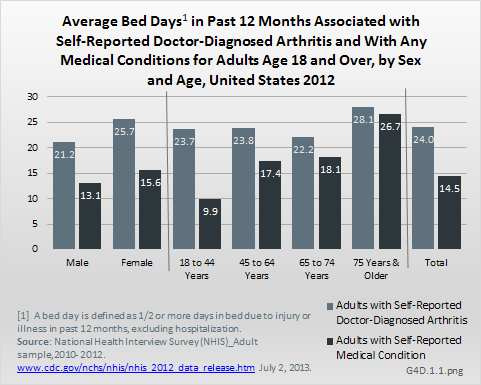
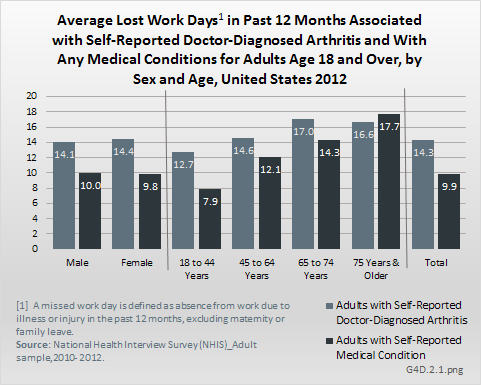
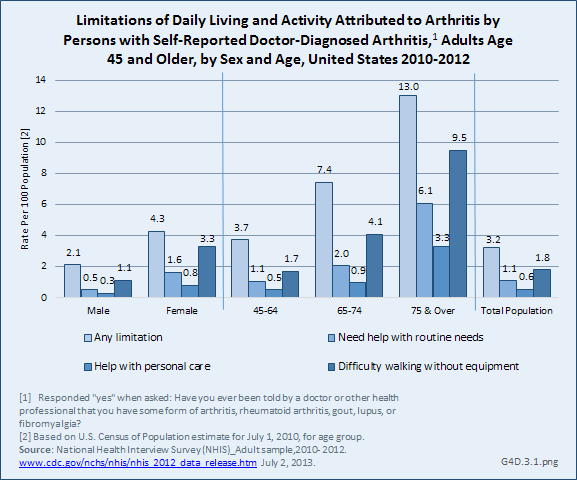
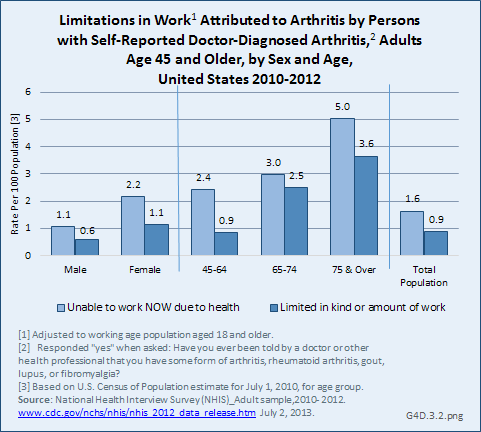
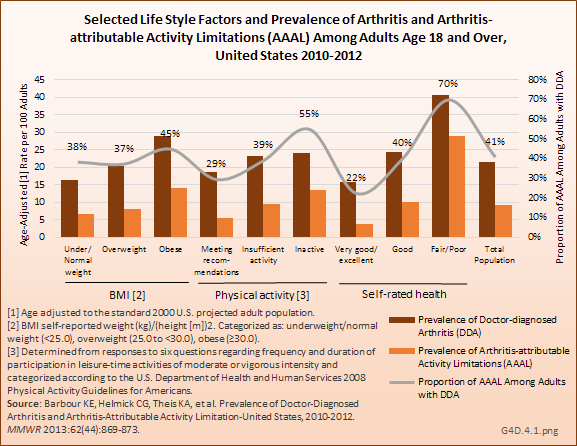

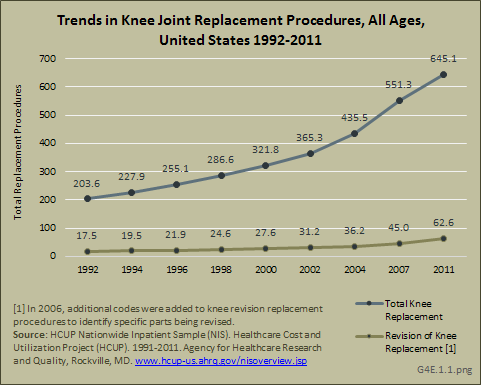

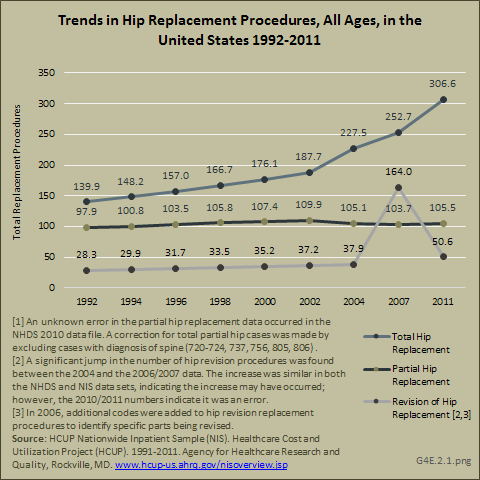
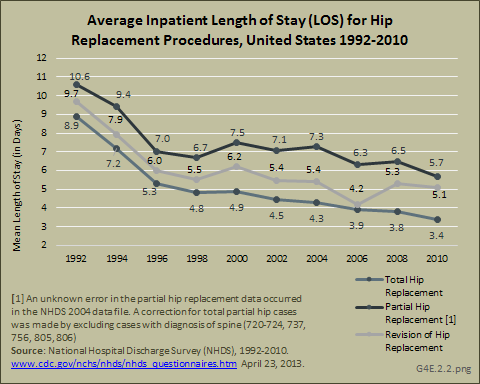

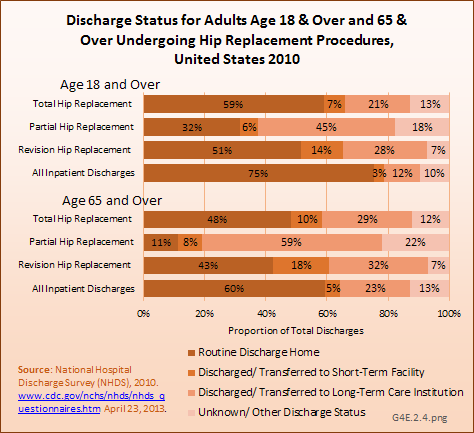
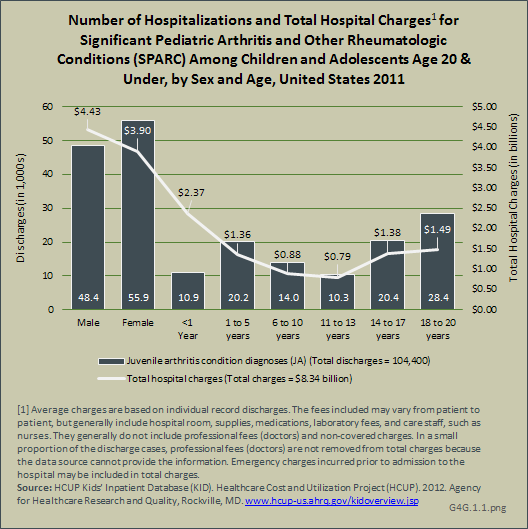
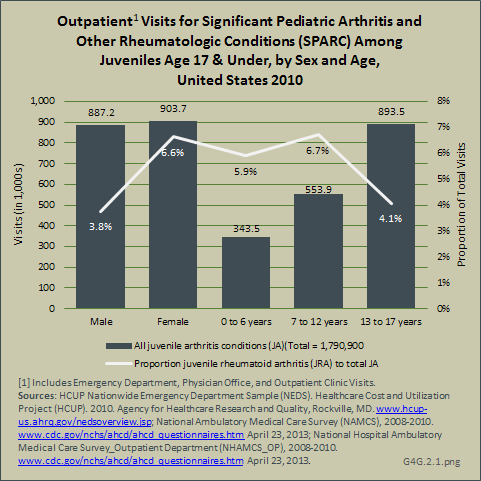
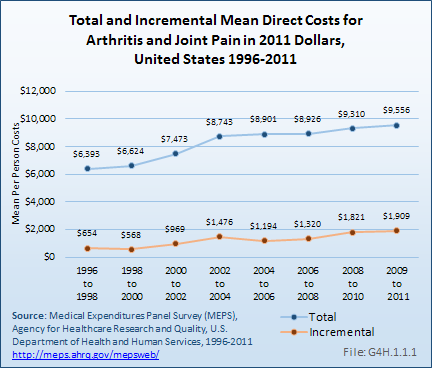
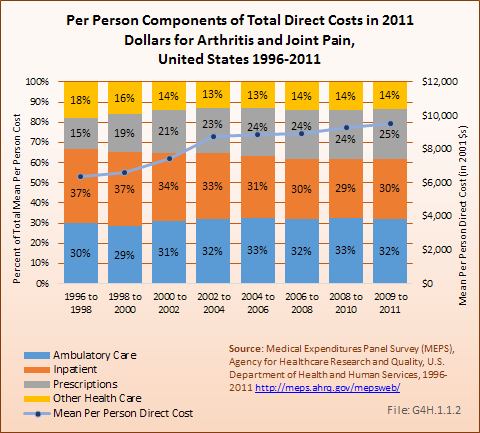
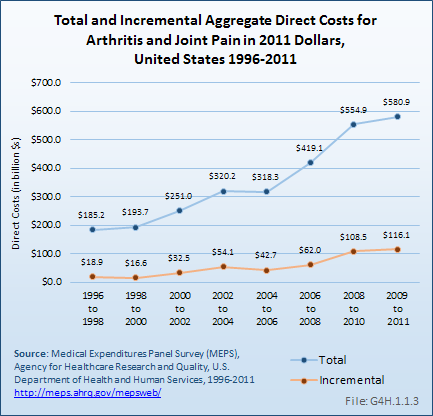
 Download as CSV
Download as CSV